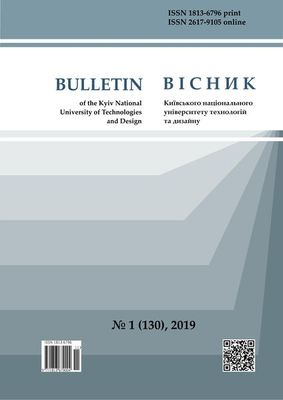STUDY OF THE INFLUENCE OF THE CHEMICAL STRUCTURE OF ACID DYES ON THE LIGHTFASTNESS OF COLOURS
DOI:
https://doi.org/10.30857/1813-6796.2019.1.6Keywords:
acid dyes, dyeing, lightfastness, color differences, chromophore, sulfo groupsAbstract
The purpose of the work is to determine the dependence of the lightfastness of colours obtained on wool fabric with acid dyes on their chemical structure, namely, the chemical class, the structure of chromophore and the number of sulfo groups. The study was carried out using seven acid dyes with a different structure of the chromophore and the number of sulfo groups in the molecule. All-wool fabric previously prepared by peroxide bleaching was subjected to dyeing. Dyeing of wool textile material was carried out in a method that was determined by the leveling power of each dye. The insolation of the dyed samples was carried out on a device with a mercury-tungsten lamp. The light fastness of the samples was evaluated according to BS 1006 UK/TN standard by determining color differences using a colorimeter. Findings. The article presents the results of a study of the effect of the structure of acid dyes on thelightfastness of the colours obtained. It is established the chemical structure of chromophore and the required number of sulfo groups in the acid dye molecule to provide light resistant colors on wool fabric. It has been proven that the number of sulfo groups is decisive for acid dyes from the point of view of chemical
structure. It has also been established that azo dyes that have an oxy group at ortho-position to azo group form the light-resistant colours. Originality. The influence of the chemical structure of acid dye molecules — the chemical class of chromophore and the number of sulfo groups — on the lightfastness of the colours obtained on wool fabric has been studied. Practical value. The chemical structure of acid dyes, providing colours with high resistance to light exposure, was determined.
Downloads
Download data is not yet available.
Downloads
Published
2019-06-05
Issue
Section
Materials Science. Textile and Apparel Manufacturing

